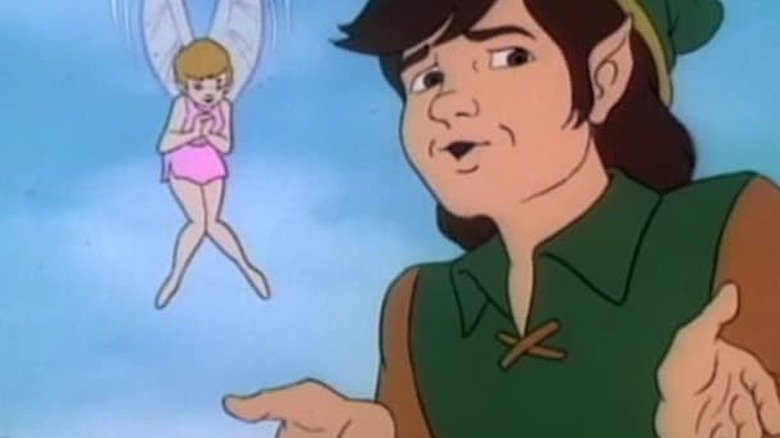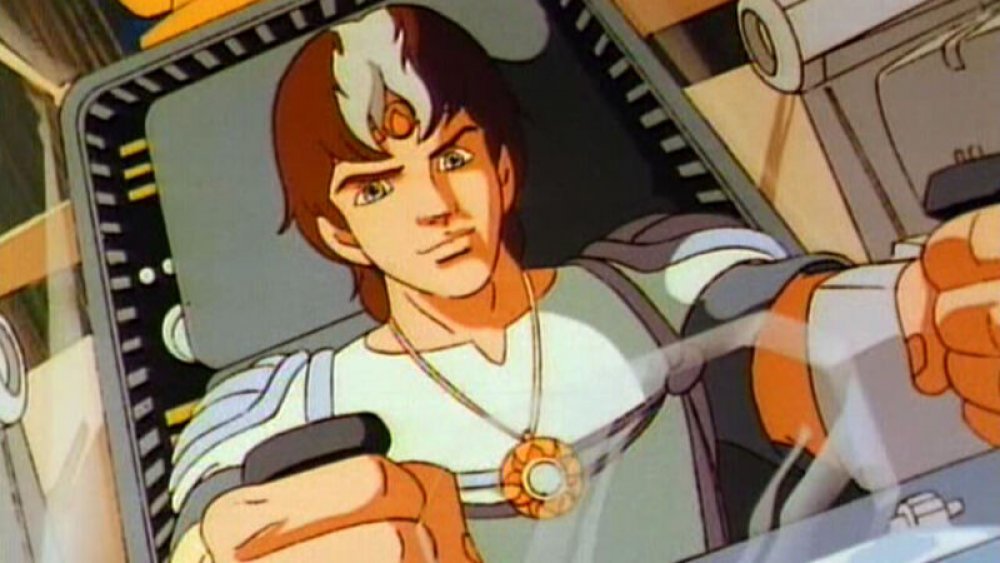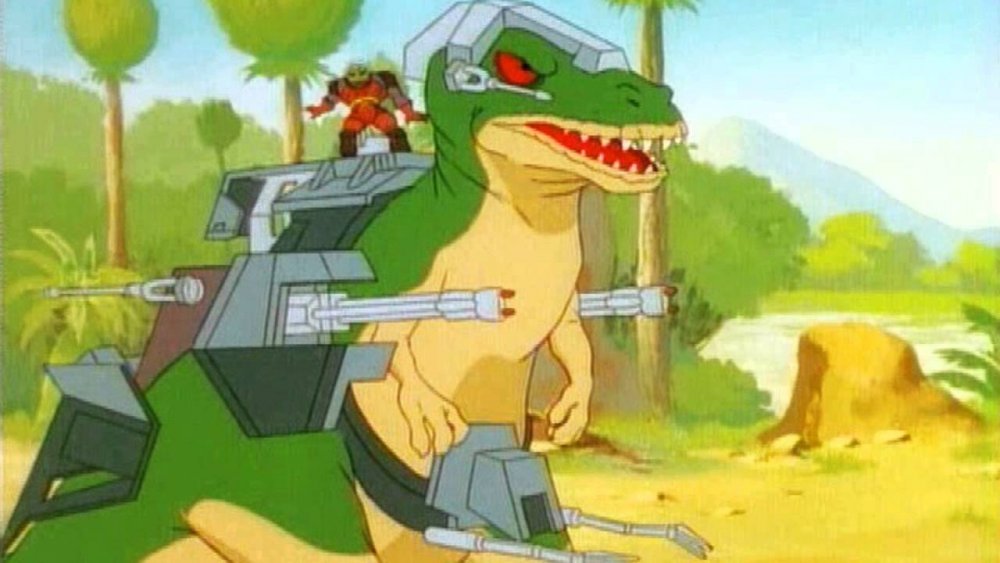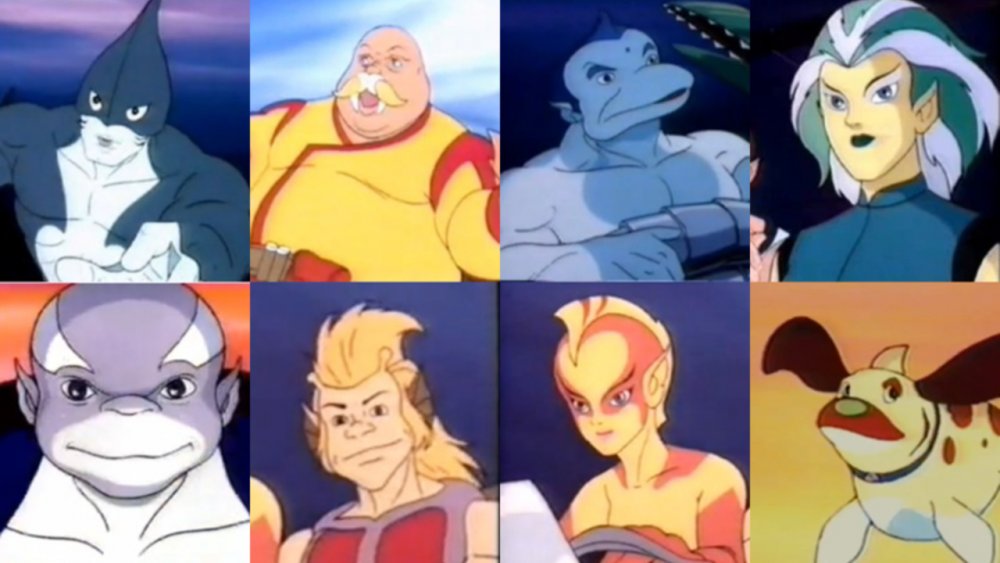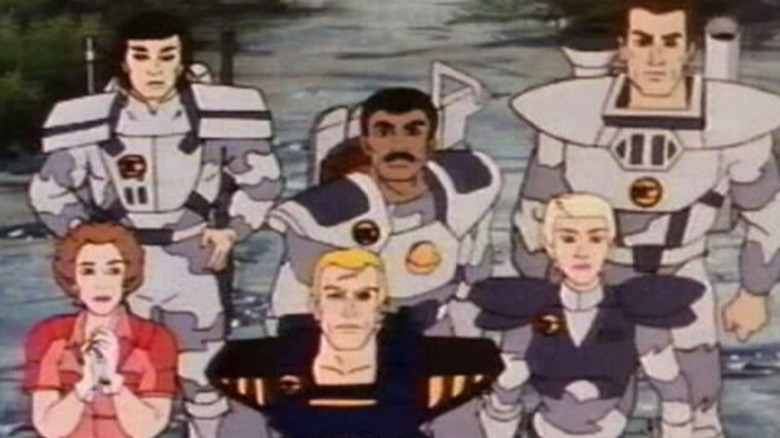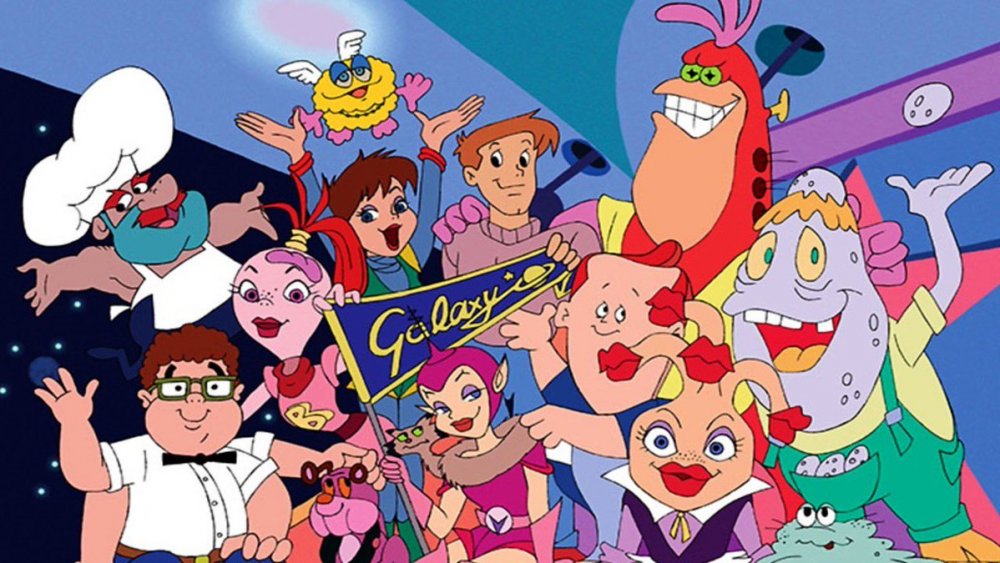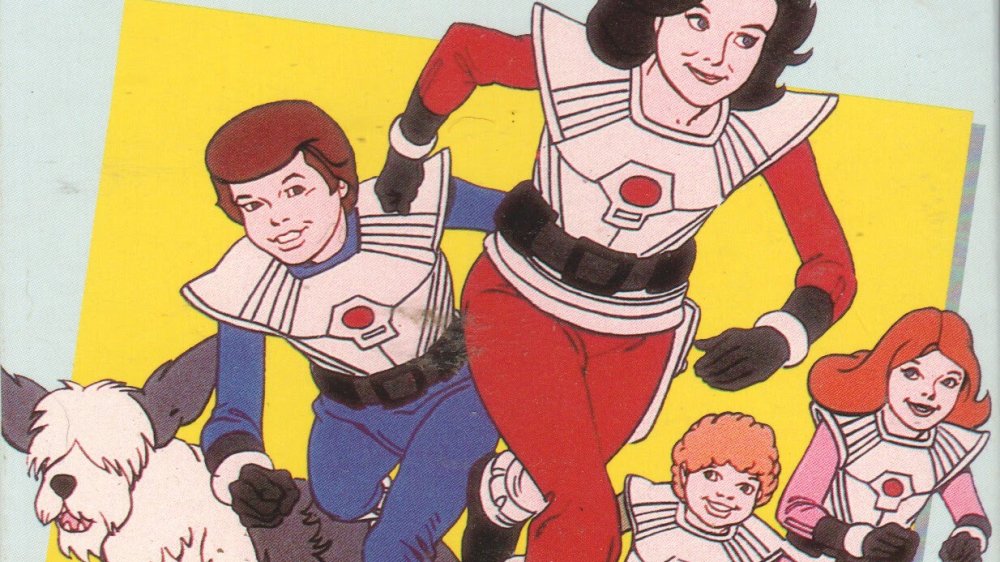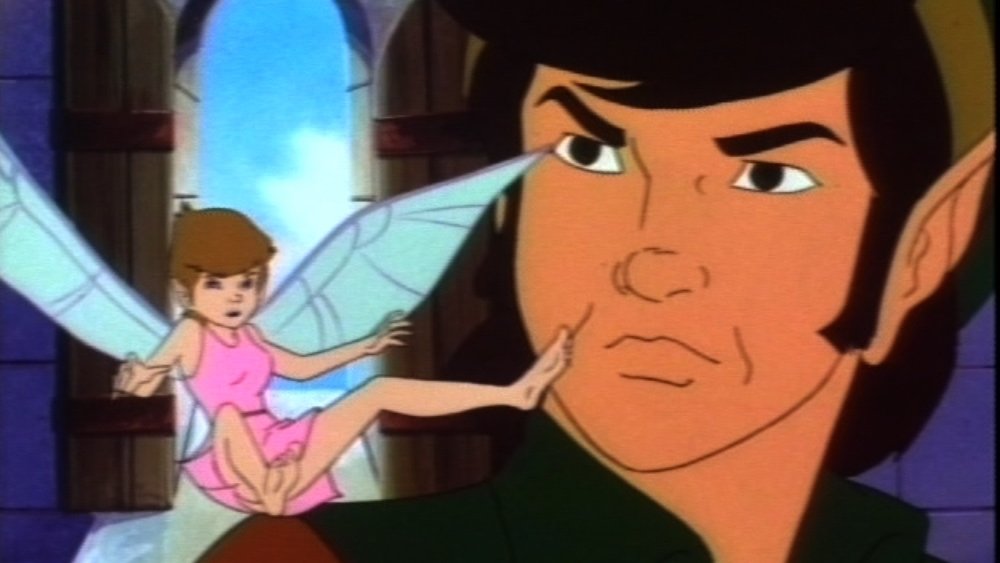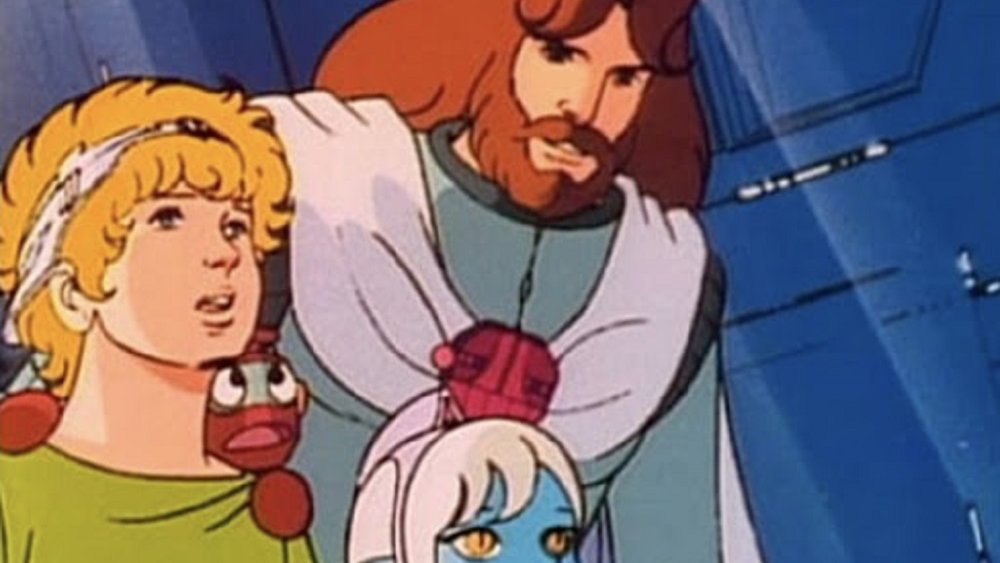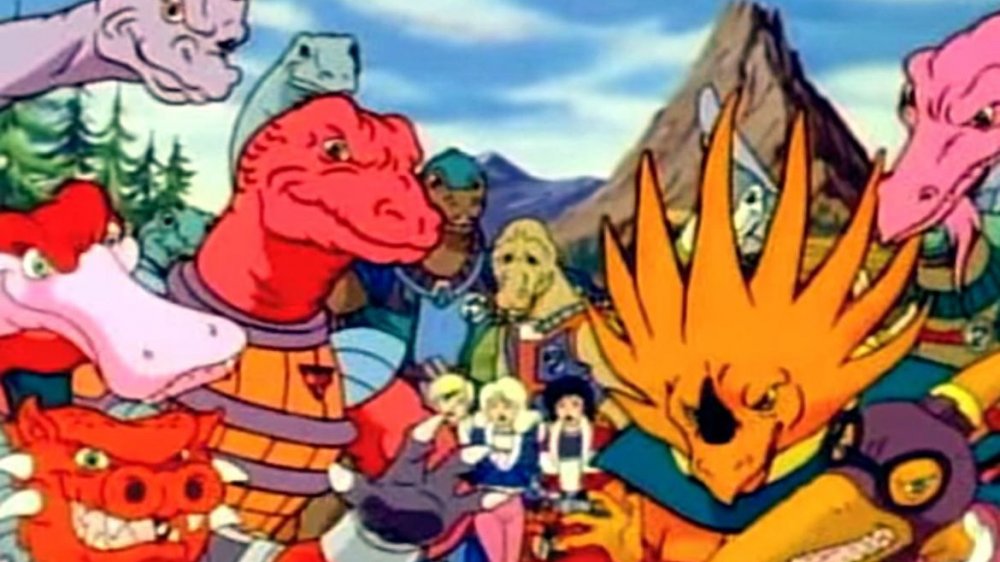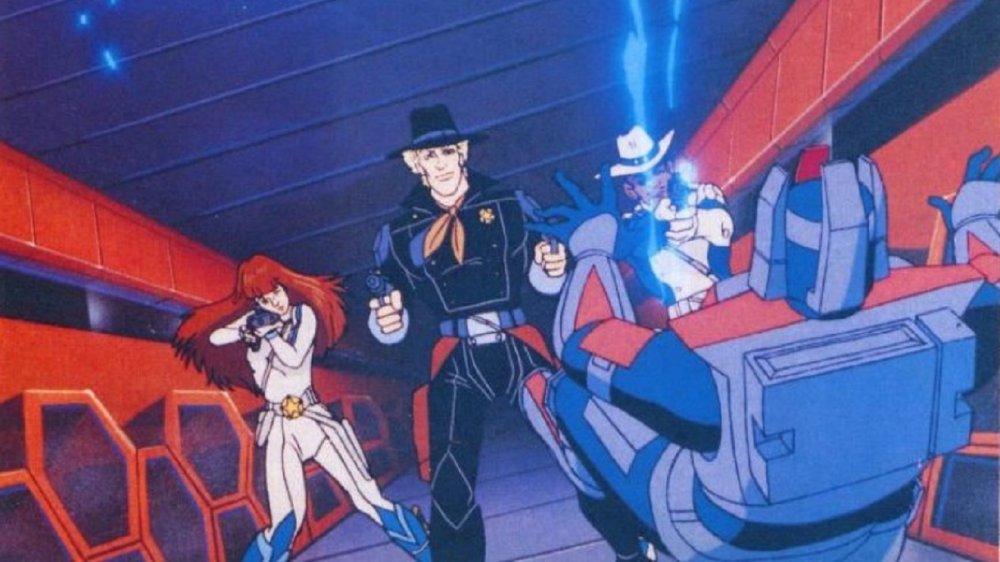'80s Cartoons That Deserved More Than One Season
In 1984, the FCC did away with guidelines that kept advertisements from overrunning children's programming. Later, in 1988, President Ronald Reagan vetoed the legislation that would reinstate those protections, claiming it was against the Constitution and free speech. These actions created an untamed landscape for cartoons: Shows were produced in the hopes of generating new, lucrative properties, the use of licensed characters skyrocketed by 300%, and syndication allowed broadcasters to show kids entertainment outside of Saturday mornings. Suddenly, new episodes were debuting multiple times a week, which meant the marketing machine never had to stop. Cartoons came out by the truckload, with no end then in sight.
Mainstays like Transformers, G.I. Joe, and Teenage Mutant Ninja Turtles began their reign over the TV landscape during this era. Sadly, it wasn't uncommon for a great show to fail after just one season. The reasons why are myriad: The toyline fizzled, companies put the product over the story, the marketing cycle had run its course. Regardless, their cancellation was complete. These are the stories of the 1980s cartoons that only got one season, but deserved many more.
Jayce and the Wheeled Warriors
A toyline hit store shelves and a show was created afterwards to help sell the merchandise: That's the typical backstory of almost any 1980s cartoon. In the case of Jayce and the Wheeled Warriors, however, the toys didn't sell well and had almost no storyline to help make them more marketable. According to writer J. Michael Straczynski, the show needed to "hijack" what he considered a "dopey concept" and make it into an adventure viewers would find engaging. He did not succeed.
The story goes that Jayce's father, a renowned galactic scientist named Audric, was attempting to create plant life that could end hunger, when solar radiation hit his experiments and changed them into the evil Monster Minds. Jayce's Lightning League — the good guys, naturally — fight against them in a wide variety of toyetic vehicles.
Jayce ran for 65 episodes. Though the cartoon is decent enough, it didn't move toys, and the finale leaves the plot unresolved. According to Straczynski, there was supposed to be a movie to resolve the show's story, one which he had written, but iffy toy sales prevented it from being produced. Perhaps a shorter second season could have done the trick and brought Jayce's journey to a close.
Dino-Riders
Kids love dinosaurs, so any show that finds a way to mount lasers on top of them is pretty much guaranteed to get their attention. That brilliant idea wasn't enough by itself, unfortunately, so comics legends Carla and Gerry Conway were brought in to flesh out a deeper story for Dino-Riders.
After an accident with the Space Time Energy Projector, two warring groups are sent back 65 million years. The peaceful Valorians look to build a new life in the past, using their high-tech necklaces to befriend, heal, and communicate with dinosaurs. The ruthless Rulons, however, ride the dinosaurs by using brain-washing helmets.
14 episodes were made in total. Most agree that the toyline is more memorable than the animated series — Tyco did such a good job on the dinosaur parts of the toys that the Smithsonian Institution approached them about making near-exact copies for their collection. More episodes would have helped to give the large cast of characters some much-needed screen time and offer up a wider variety of adventures. There is a wealth of opportunity there: The heroes have a way to travel through time, enormously advanced technology, and, you know, dinosaurs. Rumors of a movie popped up in 2015, but unfortunately fizzled, meaning Questar and his crew may have missed their chance to ride again.
TigerSharks
On the distant world of Water-O, a team of researchers must become the planet's protectors. Using advanced technology, the team transforms into various half-man sea creatures to fight off T-Ray and Captain Bizzarly. It's an easy formula with an underwater theme that allows the characters to drop random facts about marine life. What could go wrong?
TigerSharks' 26 episodes were aired as part of a television block called The Comic Strip. Some fans believe that the lacking quality of the other programs in the block were what brought TigerSharks to an end — but there are plenty of other reasons one can point to. For one thing, it generated a toyline that was not released in large numbers, and for another, the cartoon never reached the home video market. The TigerSharks did make another splash, momentarily, as a 2011 cameo on the ThunderCats remake series, but that's the last that's been heard of them. Maybe the fact that none of the main characters were, you know, an actual tiger shark has something to do with it.
Spiral Zone
In a not-so-distant dystopian future, a scientist named Dr. James Bent steals a space shuttle and drops his evil Zone Generators on Earth, creating zones that feed off of human energy. Anyone trapped in them becomes zombie-like, following his orders mindlessly, as he takes the name Overlord and seeks to conquer the remaining free areas of the world. The rest of humanity must band together: Their best weapons are five suits of armor coated with a special rare element to protect the wearer from being affected by the zones. Now, calling themselves Zone Riders, they are the last line of defense against Overlord and his Black Widows.
Spiral Zone was mostly based on a toyline from Bandai. The Japanese-made figures were well-crafted with an extreme level of articulation, but were sold at a high cost for the time. DC Comics got in on the action, releasing a four-issue series in early 1987 as well. There was never an official home release for the show, but after Spiral Zone's supervising director offered up the masters of the episodes, there was an unofficial DVD release that has since sold out. That alone should show how much fans enjoyed the cartoon and wanted more of it, even though it had a full run of 65 episodes. Still, fans were left wanting more, and should have gotten it.
Galaxy High School
Galaxy High follows two students from Earth, Doyle Cleverlobe and Aimee Brightower, as they attend high school on an asteroid. Their stereotypes of nerds, jocks, and high school in general are thrown into chaos by their alien classmates. Galaxy High only made it to 13 episodes, and its director, Chris Columbus, went on to become the man behind Gremlins, Mrs. Doubtfire, and the first two Harry Potter films.
The show's poor ratings are mostly attributed to a mid-season timeslot change, causing the show to be pre-empted by sporting events on numerous days. Still, Galaxy High has a dedicated fan base that has left its mark on viewers and critics. The cartoon even received a nomination for the Humanitas Prize for its anti-drug episode "The Brain Blaster." The main reason fans wanted more of the show, however, was its budding relationship between Doyle and Aimee that wasn't given enough time to blossom. With their social roles reversed by their bizarre school, they were seeing each other in a different light ... but there needed to be more episodes if they hoped to become an out-of-this-world couple.
Lazer Tag Academy
Jamie Jaren, Lazer Tag Champion of the year 3010, is the heroine of Lazer Tag Academy. But laser tag isn't a game in her world: She's hunting down master criminal Draxon Drear, who in turn is hunting down Jamie's ancestors. Traveling through time, she'll have to help members of her bloodline from the 1980s face off against Draxon and his Skuggs.
The show has some fun historical plots, but it never quite lives up to its full potential over the course of its 13-episode run. Toys sold decently, but when the show's merchandiser, Worlds of Wonder, went bankrupt, cancellation came swiftly. Poor marketing of the characters versus the equipment did not help either, leading to less interest in the tie-in toys. Many also saw the show as pure exploitation of their children, and did not enjoy the way it seemed to encourage kids to shoot each other.
Lazer Tag Academy was shown in reruns by the Sci-Fi Channel with a new name, Lazer Patrol. The title change was likely due to licensing and ownership of the toy name. The series would have needed to shift slightly in a second season to keep interest up, focusing more on the characters and their struggles and less on time shenanigans — but we believe it could have been done.
The Legend of Zelda
It's the show that most remember for a single phrase: "Well excuse me, Princess!" This cartoon takes the classic characters of The Legend of Zelda and gives them some of the best fleshing-out they had for years after.
Taking its inspiration from the first video game and some elements from the second, the writers incorporate a good bit of items and remixed music from the source material, making many fans happy. The animation is good, and the world of Hyrule is engaging. The writing isn't the best, mostly because it scrupulously keeps within the lines of the licensed property. What the creators nail, however, is the chemistry of the characters, helped tremendously by the voice actors. A second season could have let the formula evolve and hopefully bring more depth in, while letting these strong personalities flourish.
The Legend of Zelda was cut short at 13 episodes, lost when The Super Mario Bros. Super Show! was canceled and Nintendo became a lot more tight-fisted with its properties in other mediums. The characters did get to appear in some episodes of Captain N later on, but that only made the desire to see Link and Zelda's further adventures stronger.
Ulysses 31
It's hard to pass on a good retelling of Homer's Odyssey, even if it's an oddball French-Japanese cartoon set in the 31st century. Ulysses 31 begins as its titular hero rescues his son, Telemachus, along with two other children — but in the process, he kills the Cyclops, angering the Greek Gods. Now, Commander Ulysses of the Odyssey must travel among the stars, as his crew remains cursed and asleep until he can find the Kingdom of Hades. Ulysses' journey sees him encounter many perils and other famous figures from mythology, updated to fit the new space-age setting. Needless to say, the series is a wild and psychedelic trip that lives up to previous takes on the source material.
Ulysses 31 ran for 26 solid episodes, proving to be very popular in the United Kingdom. For those in the US, however, the second half of Ulysses' adventure was never aired, as the timeslot was overtaken by Rainbow Brite, leaving many unsatisfied. To be fair, there is a mostly fulfilling ending — not that American fans got to see it. A second season could have seen this retelling reach new heights as it explored classic sci-fi tropes, developed its characters, and taught kids about mythology.
Dinosaucers
Dinosaucers began in the bedtime stories creator Michael Uslan told his son each night. In them, and in Dinosaucers, sapient dinosaurs battle the evil Tyrannos, helped by the human Secret Scouts, named after Uslan's children and other family members. These smart dinosaurs all have secret bases and crazy vehicles, but they still manage to take time away from fighting to learn about Earth, television, and food. Moreover, the Dinosaucers are able to do something called "Dinovolving," which returns them to a stronger, more primitive form while holding on to their intelligence.
Dinosaucers' 65 episodes are fun, but the show was canceled months after its debut. Toyline problems were to blame: Lewis Galoob Toys got as far as showing off test figures, but decided not to go into full production at the last minute, due to the show's failure in the ratings. The molds were eventually sold to a Brazilian company called Glasslite who made a small number of the figures after the show caught on in Brazil around 1989.
Though it may not have been a success at the time, it left an impact and remains beloved to its fans. Perhaps the Dinosaucers were simply meant for another age.
The Adventures of the Galaxy Rangers
The Adventures of the Galaxy Rangers packs a lot of good backstory into its first few episodes. Two aliens seeking refuge from the Crown Empire offer Earth hyperdrive technology in exchange for uniting with them and their allies against the evil Queen of the Crown. She enjoys sucking the life force from her victims, and her most recent snack was the wife of Zachary Foxx, who puts together a group of Galaxy Rangers equipped with Series-5 brain implants, giving them each unique abilities. Now they'll face off against space pirates, criminal masterminds, and the Empire in an attempt to bring law to the frontier.
Part of why Galaxy Rangers works is that it is less focused on selling something across its 65 episode stretch than many other 1980s cartoons. A toy deal didn't come around until the show was well into production, in fact, which ultimately hurt the series when it came to marketing. Moreover, the series could get a little dark at times. This versatility is exciting, but crashes and burns in the end, as the show never got a true finale. Many who discovered the show when it aired or later on DVD have rightfully called it one of the 1980s' greatest animated offerings. All the more reason the show truly deserved another season.
